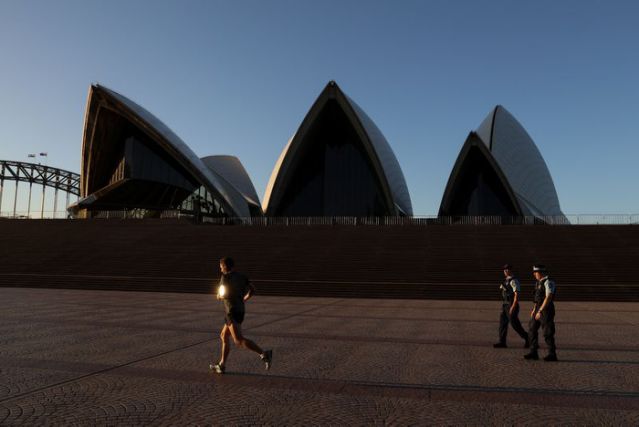SYDNEY: Australia pledged billions in tax cuts and measures to boost jobs on Tuesday to help pull the economy out of its historic Covid-19 slump in a budget that tips the country into its deepest deficit on record.
Prime Minister Scott Morrison’s conservative government has unleashed A$300 billion in emergency stimulus to prop up growth this year, backpedalling on a previous promise to return the budget to surplus.
Treasurer Josh Frydenberg on Tuesday announced A$17.8 billion in personal tax cuts and A$5.2 billion in new programmes to boost employment in a recovery plan aimed at creating one million new jobs over the next four years.
Those measures are forecast to push the budget deficit out to a record A$213.7 billion, or 11% of gross domestic product, for the fiscal year ending June 30, 2021.
“There is no economic recovery without a jobs recovery,” Frydenberg said in prepared remarks to parliament. “There is no budget recovery without a jobs recovery.”
Australia’s unemployment rate hit a 22-year high of 7.5pc in July as businesses and borders closed due to strict lockdown measures to deal with the coronavirus.
While the number of deaths and infections in Australia from COVID-19 has been low compared with many other countries, the hit to GDP has been severe.
Australia’s A$2 trillion economy shrank 7pc in the three months ended June, the most since records began in 1959.
In its new projections, the government expects unemployment to rise to 7.25pc by the end of the current fiscal year and then fall to 6pc by June 2023. Australia’s GDP is expected to shrink 1.5pc for the current fiscal year before returning to growth of 4.75pc in the next.
JOBS PUSH
Australia will spend A$4 billion over the next year to pay businesses that hire those under the age of 35 as it targets youth unemployment.
The budget also brings forward previously legislated tax cuts for middle-income earners and extends tax breaks for individuals offered in last year’s budget for low- and middle-income earners.
Some of these cuts will be retrospectively backdated to July 1, 2020.
The government’s highly expansionary budget comes shortly after the central bank’s policy decision on Tuesday, at which it kept interest rates at a record low and flagged reducing high unemployment rate as a national priority.
The Reserve Bank of Australia has slashed interest rates this year to 0.25pc and pumped billions into the bond market to keep credit flowing to the economy.
Both the fiscal and monetary support this year has helped restore consumption and business confidence and bring the unemployment rate down to 6.8pc.
Frydenberg has pledged to pare the heavy fiscal support once the unemployment rate falls “comfortably below 6pc”.
Australia delayed the release of this year’s federal budget, which usually takes place in May, as the coronavirus upended most of the economic assumptions underlying its projections.
While most of the measures announced on Tuesday were not new, the government affirmed its strategic priorities that include boosting domestic energy production and manufacturing and infrastructure investment.
Frydenberg said the plans would “ensure Australian manufacturing plays an even greater role in our economic recovery.”




